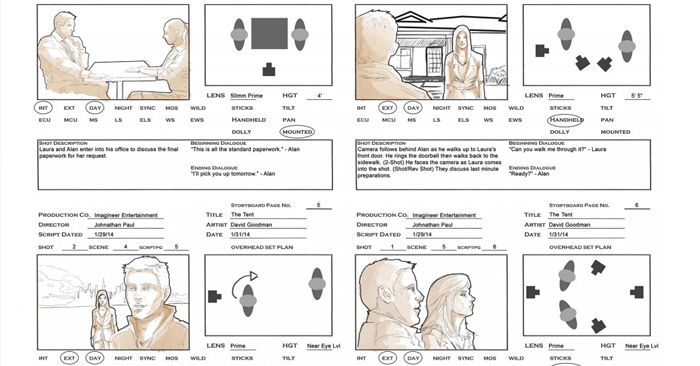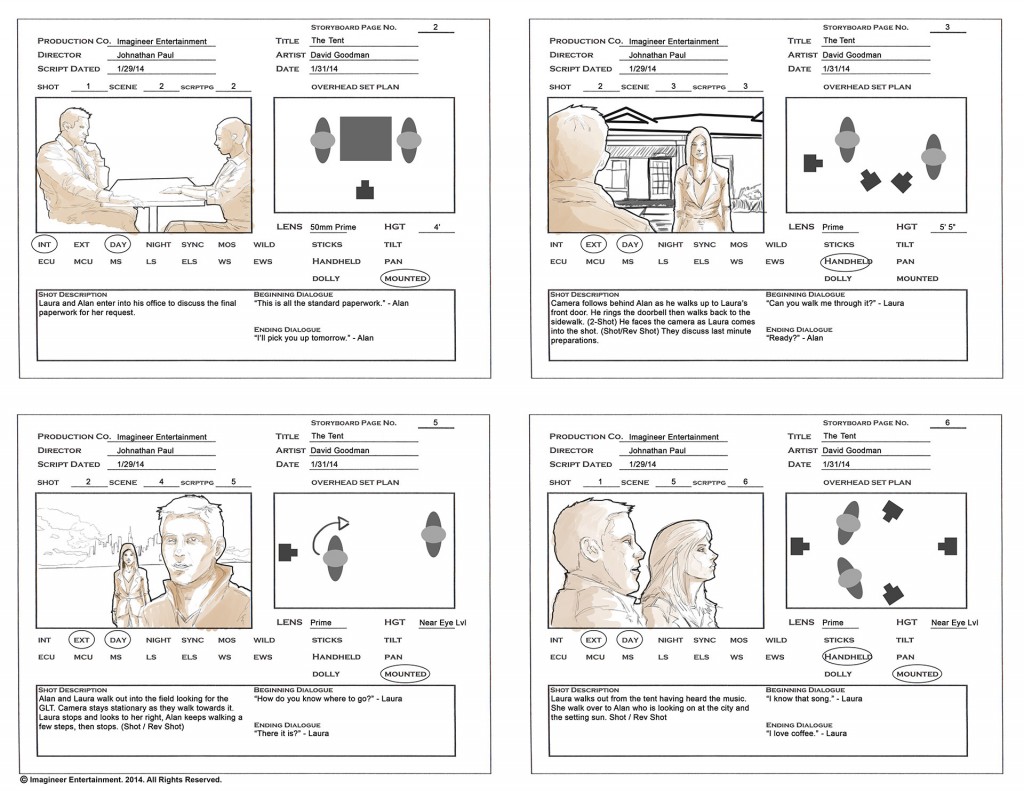
Storyboarding Your Film: Tips for Your Next Project
Storyboarding is a great way to pre-visualize your film before you begin shooting. We share tips and point you toward tutorials that will help navigate this aspect of the pre-visualization process.
Sometime back we gave you 10 Tips for Creating Storyboards, those tips came from illustrator Ben Caldwell and Dreamworks. Today we’re going to give you a few additional tips with the hope of allowing you to take your storyboards to the next level.
Just like with any film you want to start with the script. From the script you can gain a sense of how to best approach the visuals for the film. From this point it would be a good idea to begin creating a shotlist.
The Shotlist
A shotlist does exactly what it says it does. It runs down a full list of every shot to be filmed in your project. It is a great way to checklist and organize your shots so you reduce the need for reshoots. Also, a shotlist can help bridge the gap between certain sequences. It does this by not requiring a storyboard for every shot of the film and allows for some fluidity. Lesson Bucket has a great page devoted to shotlists with a video tutorial video from the article author Brett Lamb. Film Sourcing has all the documentation you need including a shot list.
While generating your shotlist be sure to label and single out key shots and sequences. These specific shots and sequences are usually the artistic foundation of your film.
Key Shots and Sequences
Using the shotlist identify your key shots and sequences, this is where your attention for storyboarding needs to be focused. By identifying these you can focus your attention on how you will compose these specific scenes.
For example, I directed a short film which had a quick turn around time of 3 weeks. Instead of storyboarding the entire film, my writer and I focused on key specific scenes that would be the most important to the story. I then crafted 4 specific storyboards which we used along with our shotlist.

Storyboards from the short film “The Tent” courtesy of Johnathan Paul.
If you’re just dead set against drawing storyboards stop here and check out Storyboard That. While I would encourage you to draw your own storyboards this website is a good resource for those that don’t have the time or artistic skills to draw.
You Don’t Have to Be a Professional
This can’t be stressed enough: by no means do you need to be a professional artist to create storyboards. Stick figures work just fine. Many filmmakers from varying drawing skill levels have produced great storyboards that work perfectly for gaining an understanding of a shot or scene.
Some directors end up collaborating with either an individual artist or a team of artists to develop the storyboards for their project. Then there are other directors like Ridley Scott who come from an art background who storyboard their own films.

Storyboard Art from “Alien” by director Ridley Scott.
Don’t feel you can draw at all? Well, here is a video to boost your storyboard confidence.
Then there is also the Robert Rodriguez way for storyboarding…by using video.
Still want to collaborate with another artist? Check out Jorgen’s List. It’s a great resource for finding available storyboard artists. At present there are around 50 artists listed.
Know the Lingo
Whenever you put your storyboards together, even if you are using video storyboards, you need to know the basic lingo of framing for filmmaking. Being able to talk about or add this lingo to your drawn storyboards is important and can help to make things easier on everyone, especially your Director of Photography and Camera Operator. To help you with this the IAFT or International Academy of Film and Television has a great video that takes you through the shot terminology you’ll need to know when crafting your storyboards.
We hope these tips are helpful. We hope they aid you the next time you begin putting together storyboards for your next project. Have any additional questions or other tips to add? Let us know in the comments below.





